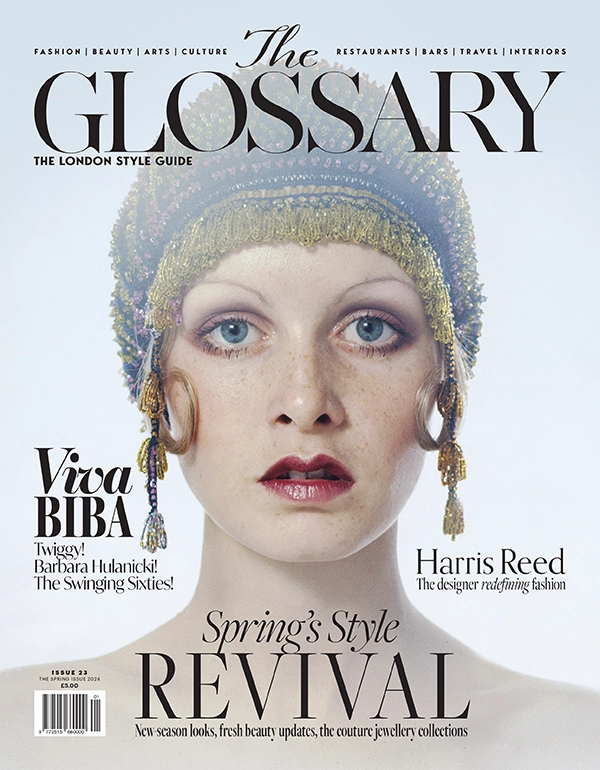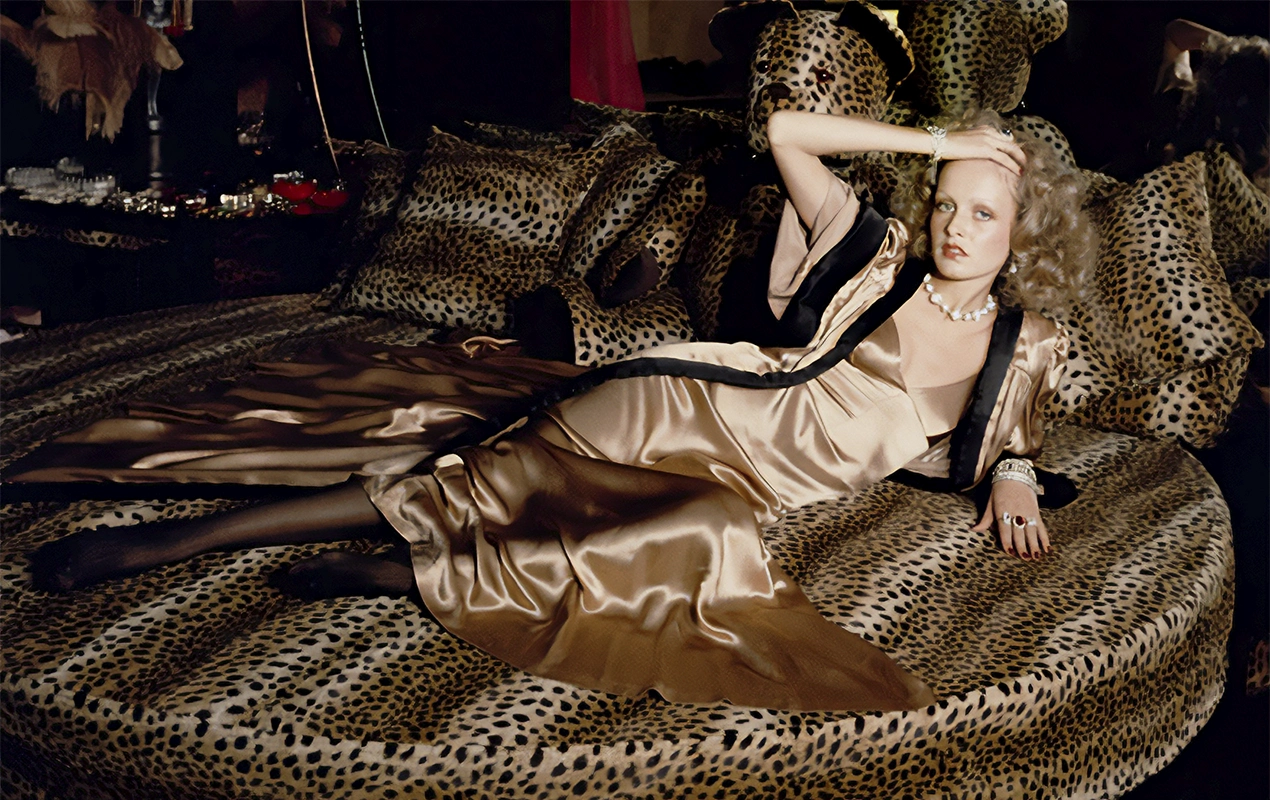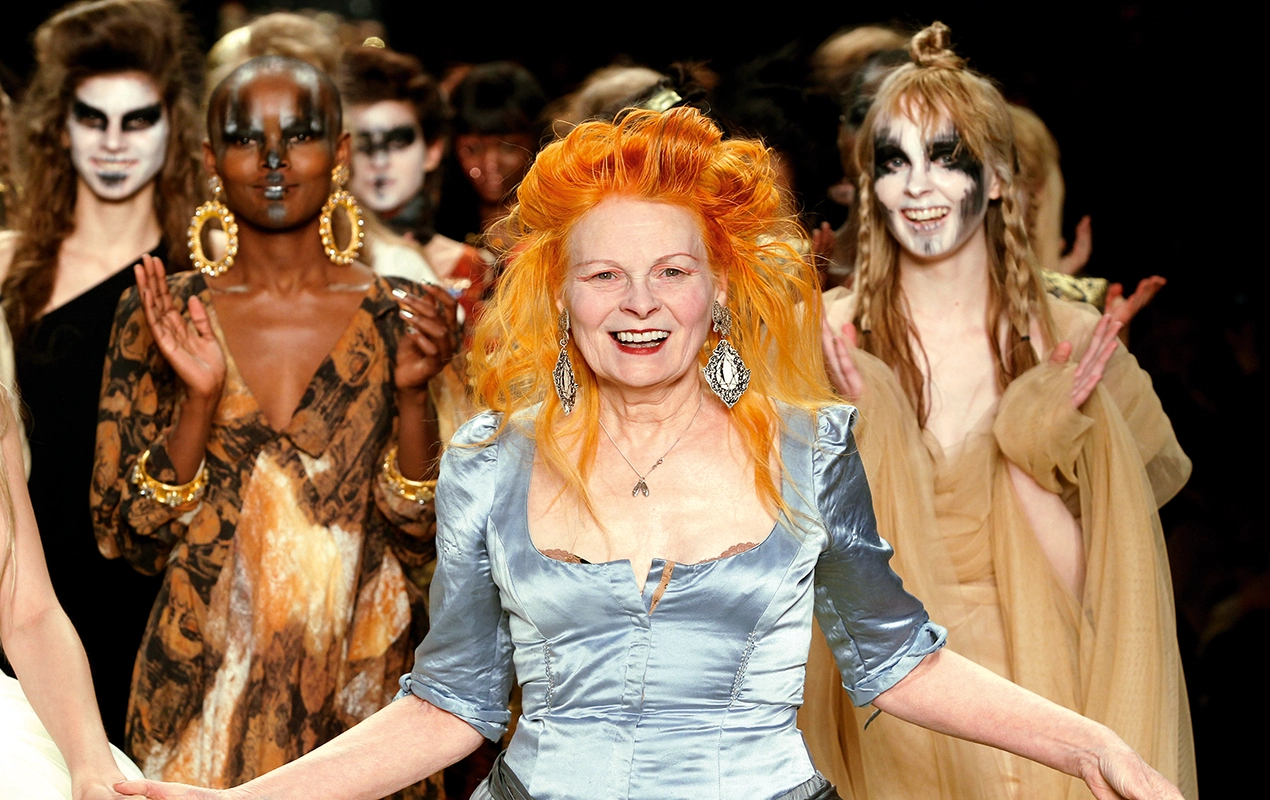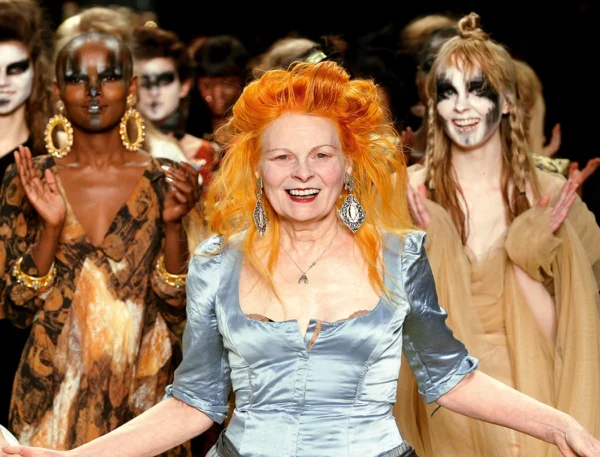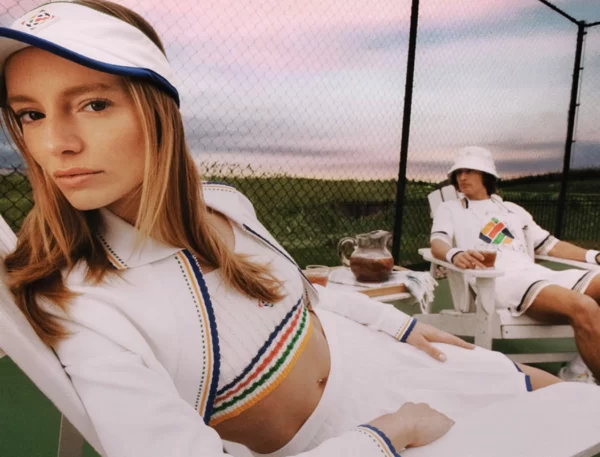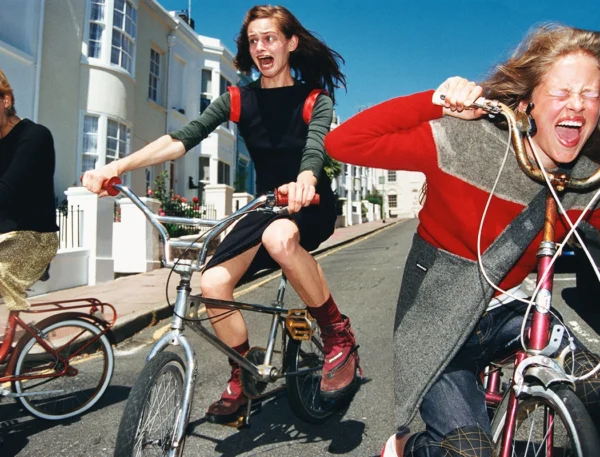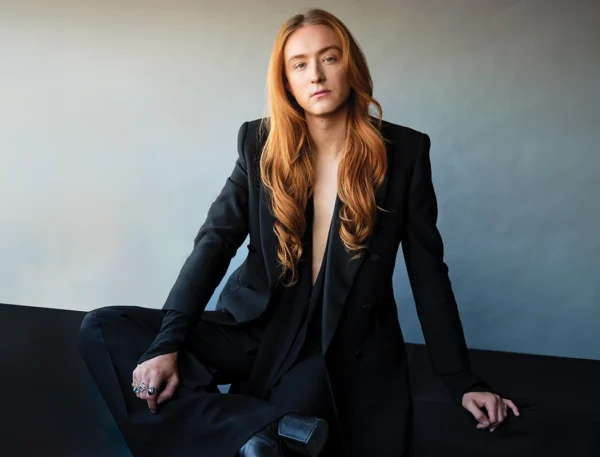She was as famous as The Beatles and now a new exhibition, The Biba Story: 1964-1975, celebrates Barbara Hulanicki and the retail phenomenon she created. The show at the Fashion & Textile Museum, which opens this Friday, chronicles the extraordinary journey of the iconic brand from the opening of its first shop in 1964 to its closure in 1975. Here, both Barbara and the exhibition’s curator Martin Pel talk exclusively to The Glossary about Biba’s enduring legacy
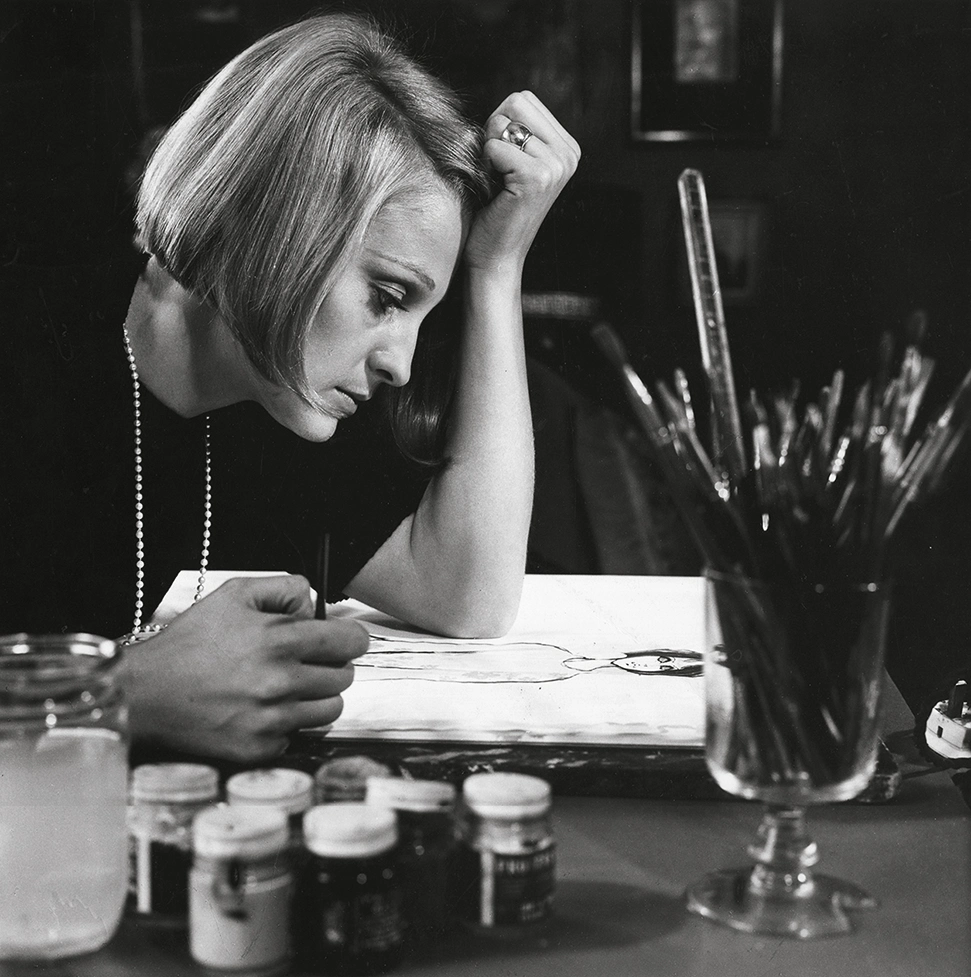 Pin
Pin For a woman who shaped the face of fashion in the 1960s, forever transforming the retail landscape with her brand Biba, Barbara Hulanicki is refreshingly down-to-earth. When we speak, the 87-year-old illustrator and designer is as generous with her time as she is with anecdotes, and prone to breaking off into peals of laughter as she recounts her remarkable past.
This infectious enthusiasm has most recently been channelled into her latest project, The Biba Story, 1964-1975 which opens this week at the Fashion & Textile Museum. It’s the first ever London exhibition to chart the meteoric rise of what began as a small mail order firm but swiftly became the world’s first lifestyle label. “I’m terribly excited about the show,” she tells me over the phone from Miami, where she now lives. “When I walk in and see all those pieces, I am going to feel so nostalgic.”
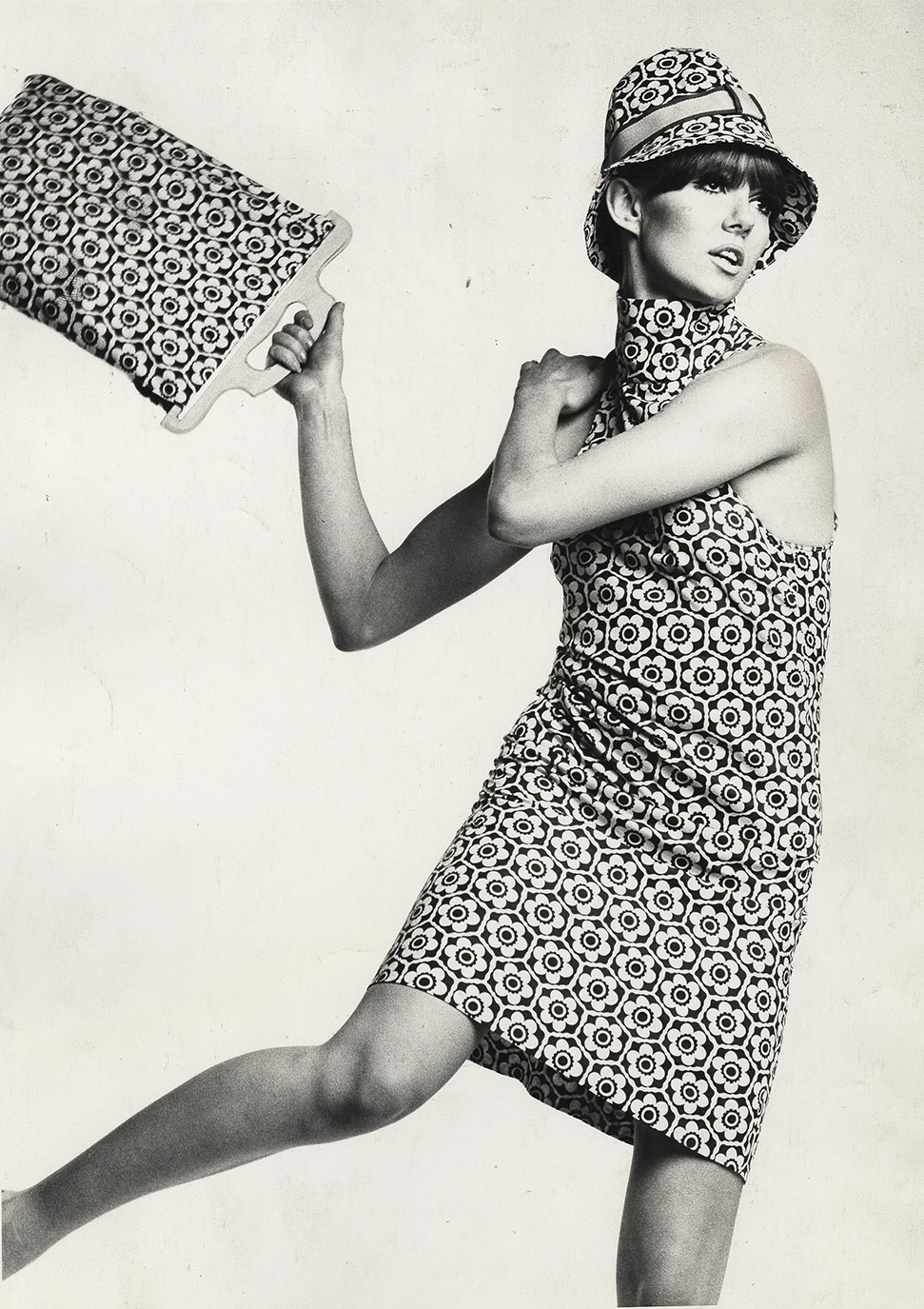 Pin
Pin The exhibition, which coincides with the 60th anniversary of the opening of the first Biba store in the capital, was the brainchild of Barbara and Martin Pel, a curator of fashion and textiles at the Royal Pavilion & Museums in Brighton. Though they were separated by the Atlantic during the year it took to pull the show together, they spoke frequently on the phone in “a very collaborative process,” says Martin. “Barbara is always so positive, she’s a great person to work with as you get swept up in her energy, which is obviously what happened at Biba.”
The story of Biba and its founder is, indeed, remarkable. Barbara Hulanicki was born in Poland in 1936. The family moved to Palestine where her father Witold, the Polish Consul General to the Middle East, was stationed; after her father was assassinated in 1948 the family relocated to England, settling in Hove. Barbara attended Brighton Art College where she studied fashion and art, before becoming a fashion illustrator for Vogue, Tatler and Women’s Wear Daily.
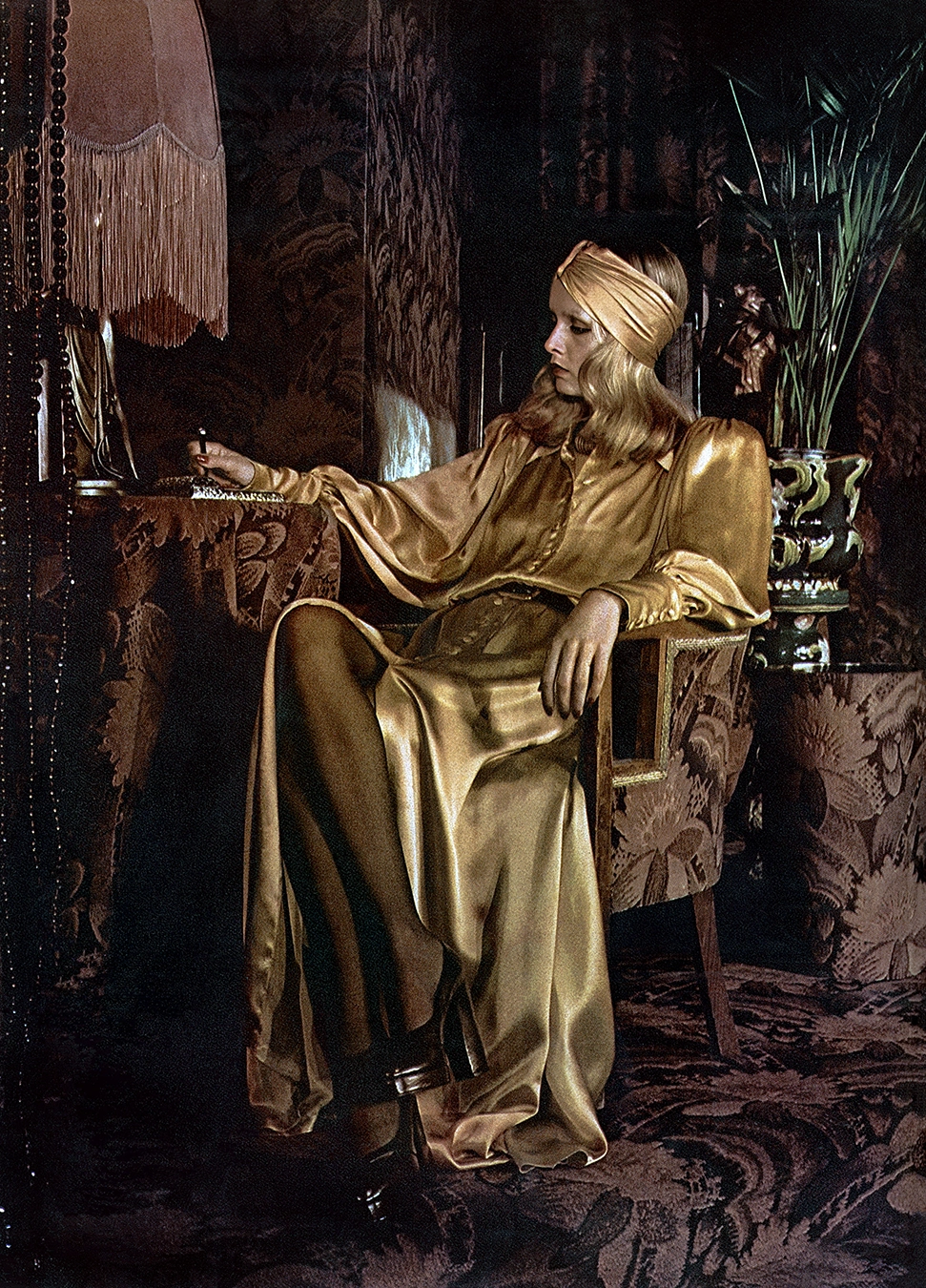 Pin
Pin It was at this time that Barbara and her husband Stephen Fitz-Simon (Fitz), who was always by her side, set up a mail order company selling her fashion designs. When Barbara’s pink-and-white Brigitte Bardot-inspired gingham dress, with its cut-out back and matching kerchief, made the pages of the Daily Mirror, it resulted in a staggering 17,000 orders for the 25-shilling ensemble.
It was a pivotal moment and, in 1964, Barbara opened her first boutique on Abingdon Road, W8, turning the conventional shopping of the Fifties on its head. The shop windows were blacked out, the lighting dim; there was a communal changing room; loud music blared out of speakers. It was an immediate hit. Barbara opened three subsequent Biba premises, each one bigger than the last, on Church Street (1966-69), Kensington High Street (1969-73) and Big Biba, the seven-storey department store, in 1973.
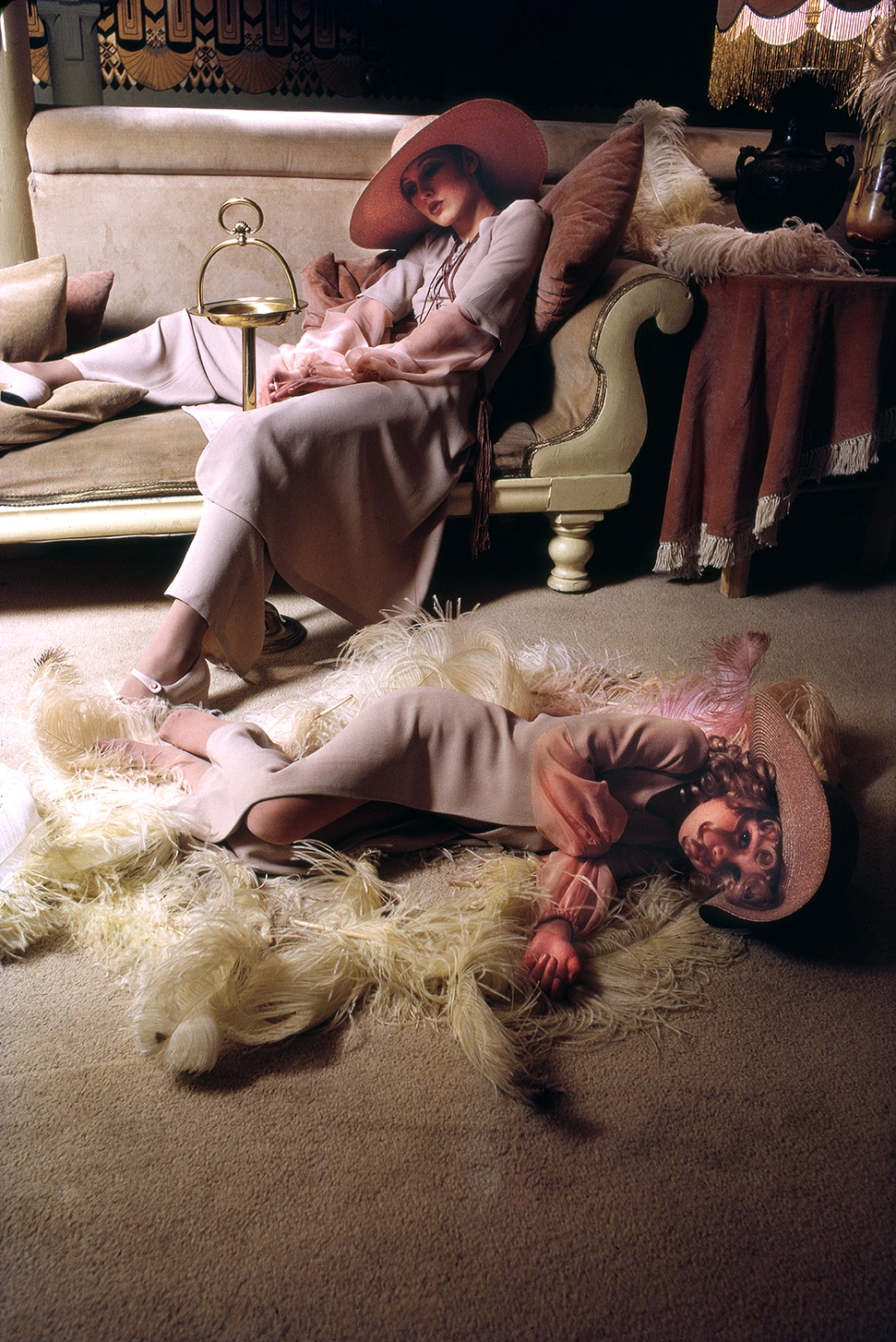 Pin
Pin All were filled with Barbara’s designs, which weren’t just innovative and fun, they were affordable, too. Biba dresses were just £3, making them accessible to the new generation of young girls (and boys) who were earning their own money in London and asserting their tastes in music, lifestyle and, above all, their wardrobes.
“My fashion offered a new freedom for young women,” says Barbara. “The clothes were beautifully made and had fabulous prices. The fabrics were lovely, and I spent a lot of time pattern cutting – no one was doing really good shapes back then. There were only a few things from Paris that were beautifully cut, like Sonia Rykiel, but the rest was hideous, awful.”
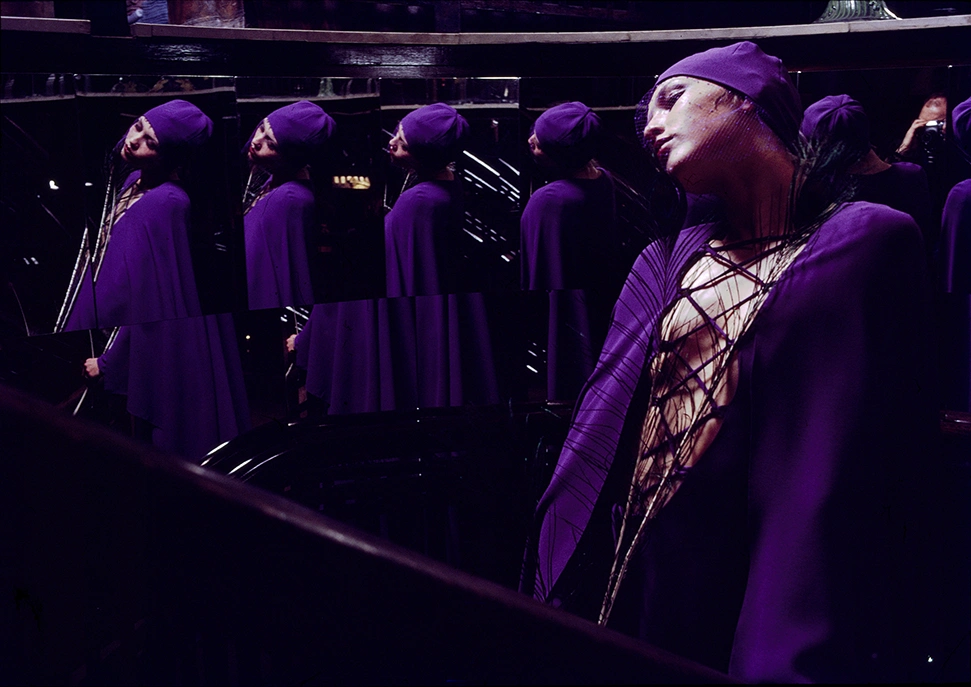 Pin
Pin The word quickly got around, and customers would often queue around the block at the Abingdon Road store, which also became a magnet for the icons of the Swinging Sixties, too. Twiggy, Bardot, Sonny and Cher, Barbra Streisand, Mick Jagger, the Beatles, Anita Pallenberg, Pattie Boyd, all wanted to be a part of the experience.
It was Big Biba, however, which became the place to be. When the building on Kensington High Street opened its doors, it attracted a million customers weekly. Behind the Art Deco facade it was a wonderland of fashion, as well as home furnishings, makeup and accessories. There was a Pop Art-style food hall, boudoir, beauty salon, rooftop garden, complete with real-life flamingos, and the 500-seater Rainbow Room restaurant.
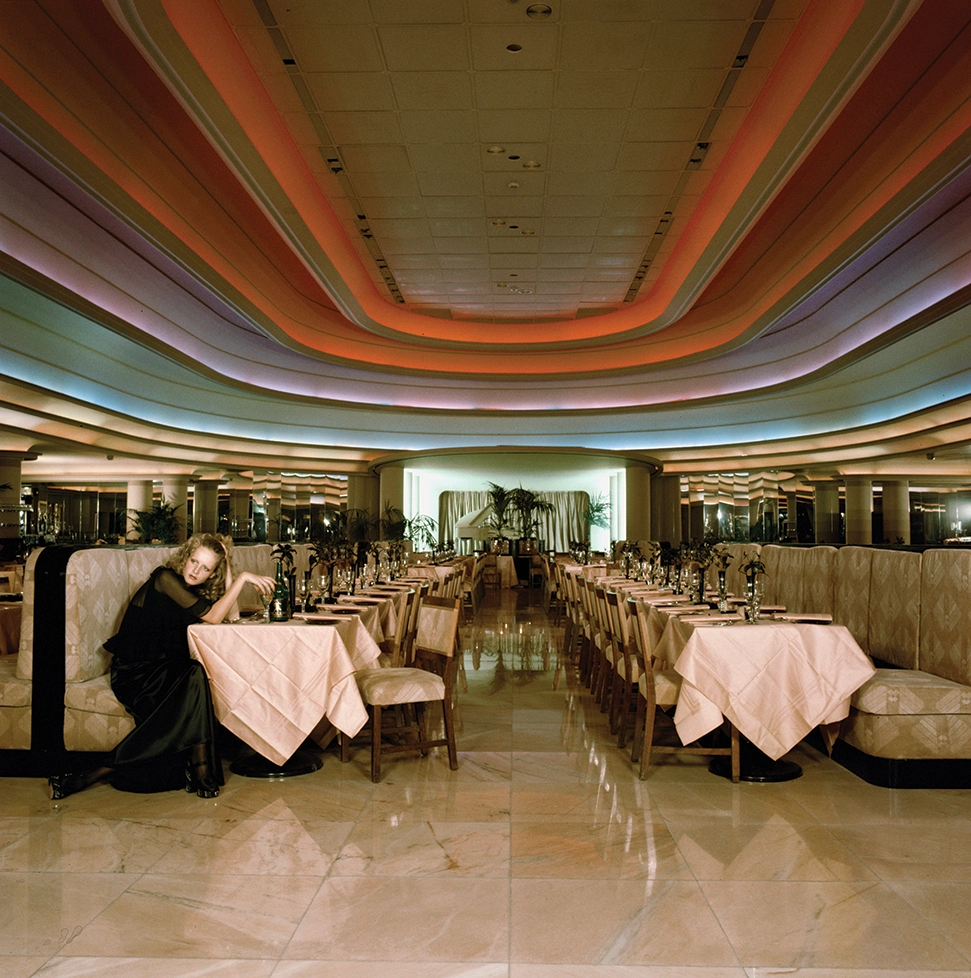 Pin
Pin This was way more than a store – this was a lifestyle. “You could live, sleep, eat and breathe Biba, literally,” says Martin – and people couldn’t get enough. And yet, despite Biba’s popularity, Big Biba closed its doors in 1975 following a disagreement between Barbara and major shareholders. She and Fitz moved to Brazil, ending one of the most exciting chapters in fashion history.
The new Fashion & Textile exhibition more than does this extraordinary Biba journey justice. Curated chronologically, it opens with the gingham dress that was so instrumental in Barbara’s career. It is, says Martin, one of his favourite pieces. “It was Barbara’s statement of intent and marks a line in the sand for her,” he says.
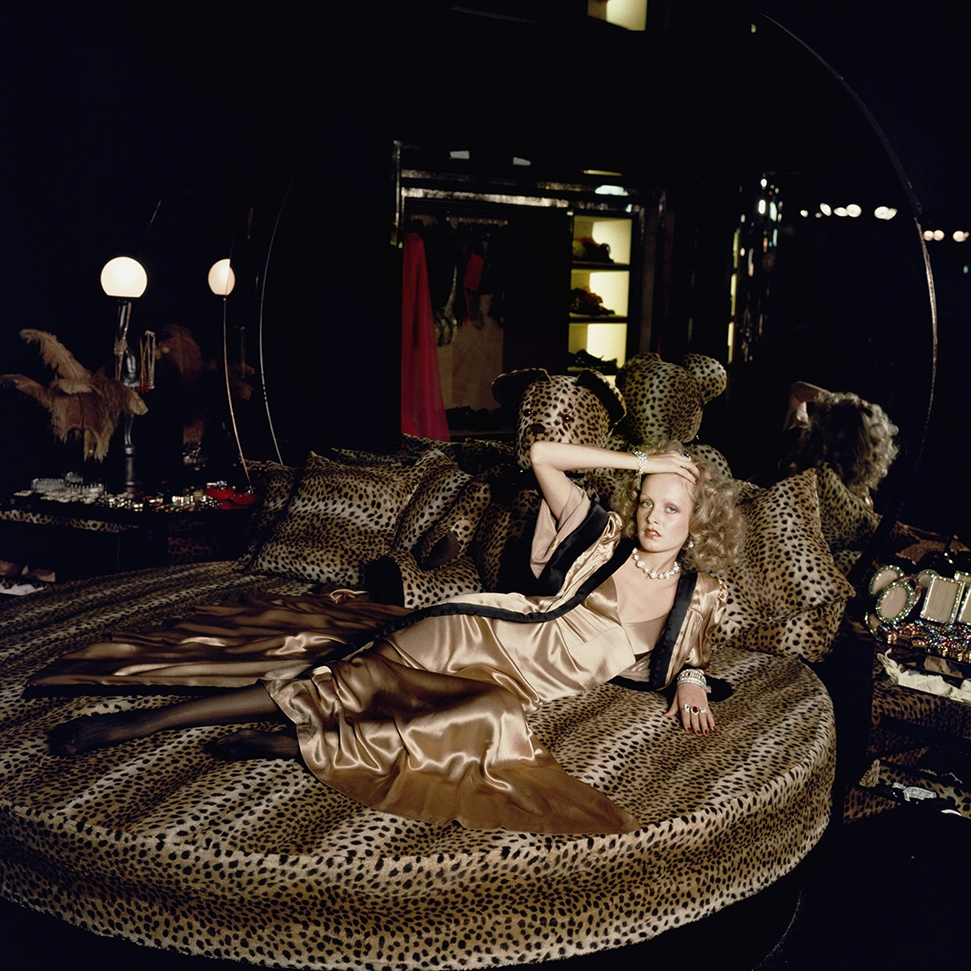 Pin
Pin On the gallery’s ground floor are recreations of the four Biba stores in London, reflecting the progression from the early mini-skirted Biba girl to the more sensual vampish look of the Biba woman. We see sequinned bodices, devoré wraps, trouser suits, bias-cut evening dresses, floppy hats and feather boas, inspired by everything from the 1930s to the pre-Raphaelite movement.
Surprisingly, perhaps, very few of the garments on show belong to Barbara herself. “I wish I’d kept a lot of it,” Barbara says. “Fitz and I went to Brazil after Biba – we had this fabulous old house in São Paulo – and I took everything with me, every single pattern, every sample. And Fitz said one day, you’ve got to get rid of these things, they’re holding you back. So we got a truck and drove to a favela and gave it all away – there must have been about a thousand garments.”
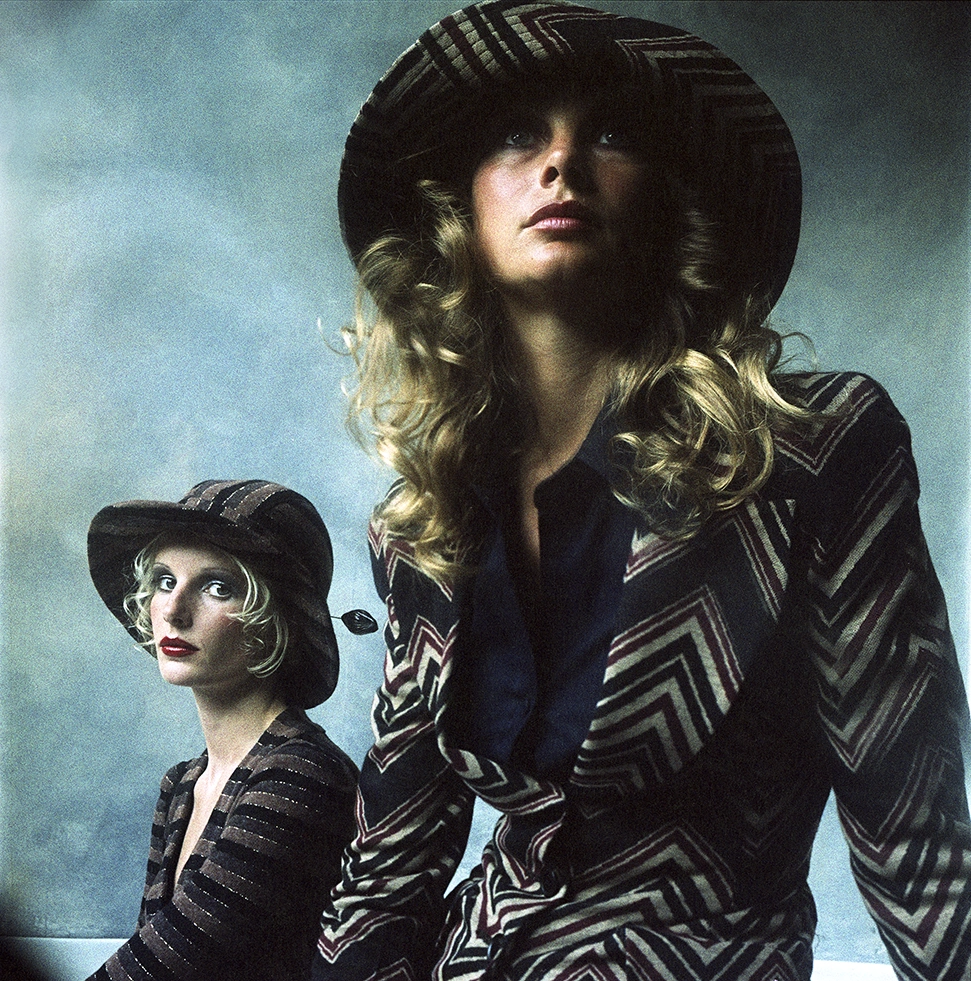 Pin
Pin Instead, much of what is on display has been sourced from the women who used to work for Biba in the 60s and 70s, known as the Biba girls. “Though it’s Barbara’s story, she also really wanted the exhibition to be about the women who worked at Biba,” Martin explains. “She loved the idea of the Biba girls as heroes.”
And yet this exhibition is Barbara’s time to shine, not just as a talent for capturing the zeitgeist and designing clothes, but also as a pioneer. Her ethos of inclusivity saw her launch the first cosmetics range for Black skin. She also actively supported the queer community, advertising in the gay press. “We’re talking serious four-page adverts – Barbara wanted everyone to be a part of Biba, it was a glamorous democracy,” says Martin.
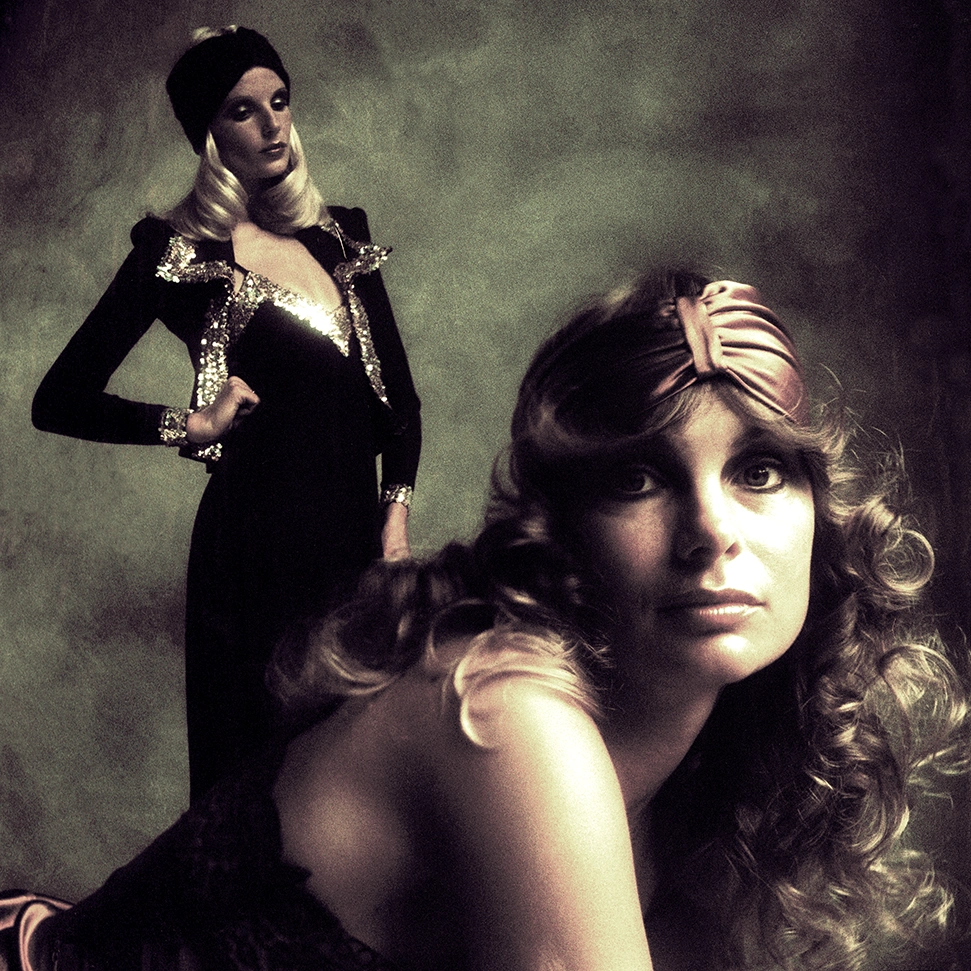 Pin
Pin She also launched the Biba catalogue in 1968, taking the label nationwide. But these were no ordinary catalogues; in true Hulanicki style, she commissioned her own highly-stylised editorial comprising beautiful photography taken by the big fashion photographers of the era including Helmut Newton and Sarah Moon. “We were selling a lifestyle,” explains Barbara. These catalogues are displayed on the upper floor of the exhibition; also on view are a selection of the accessories, homeware, cosmetics and ephemera that were for sale at Big Biba.
“I hope Barbara feels really proud seeing this show,” says Martin. “I’d love her to recognise that what she created was an incredible brand. For Barbara, Biba may have lasted just over ten years but for us, looking back 60 years later, it has become a part of fashion history.”
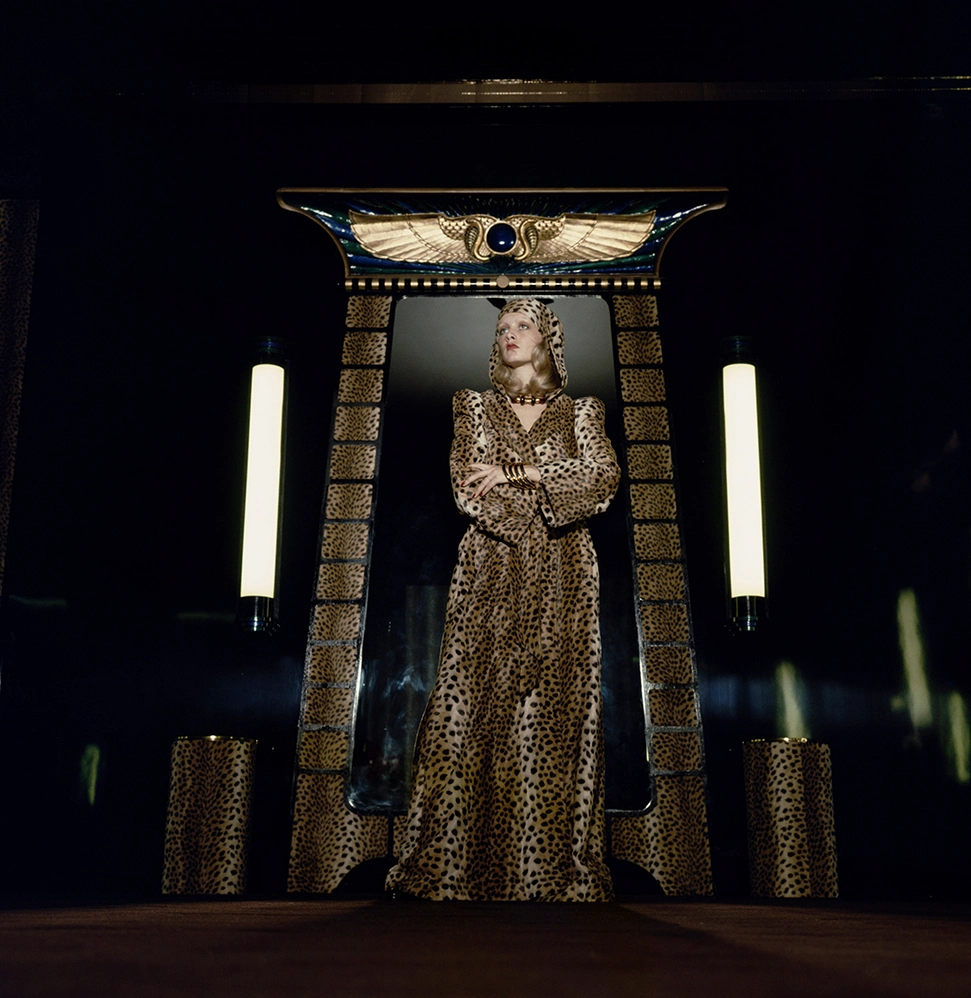 Pin
Pin Martin hopes that for the visitor, it will give a greater understanding of how the vision of one woman transformed retail. “I’d like people to see that Barbara is an absolute icon. She completely changed the way we all shop through her sheer drive and willpower and determination – having amazing clothes on the high street didn’t exist before.”
And as for the Biba founder herself, what would she like the viewer to come away with? “I’d hope that they would say, why doesn’t she do it again – and I would. I would love to do it again.” So typically Barbara.
Read the full-length feature in the Spring Issue of The Glossary
‘Welcome to Big Biba: Inside the Most Beautiful Store in the World’ by Steven Thomas and Alwyn W Turner (ACC Art Books)‘The Biba Story, 1964-1975’ is at the Fashion and Textile Museum until 8 September 2024; fashiontextilemuseum.org
